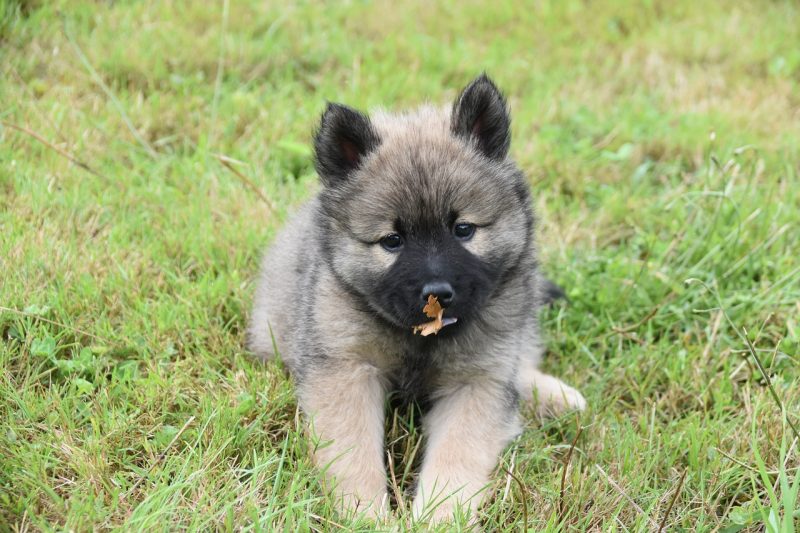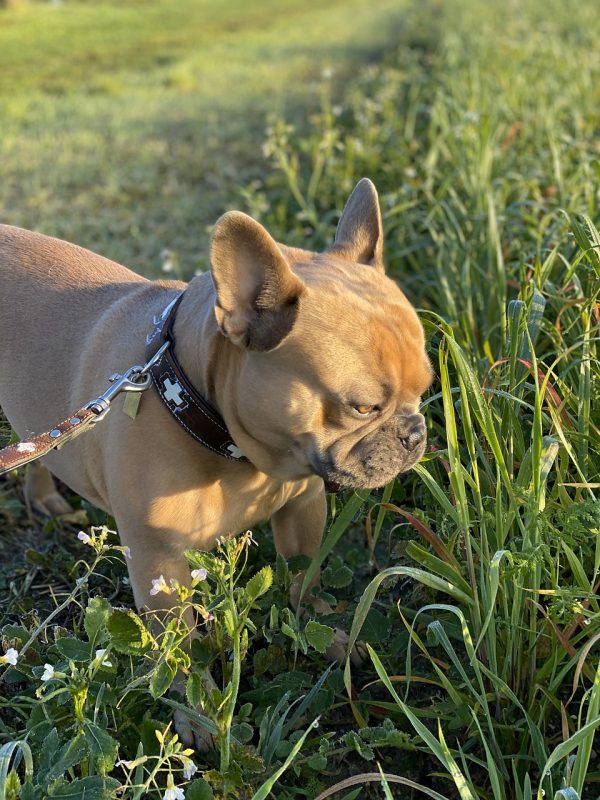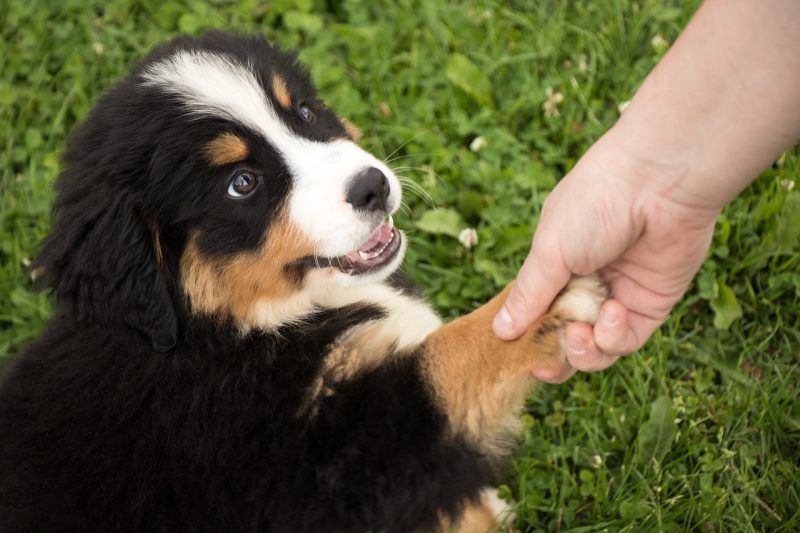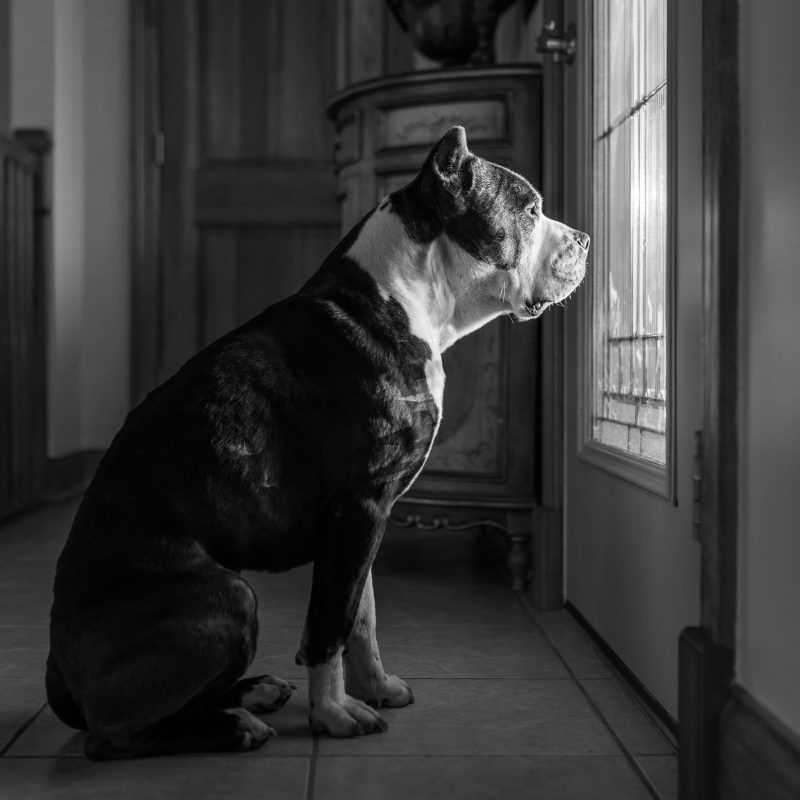
Is It Bad for Dogs to Eat Grass?
You glance out the window and spot your furry friend munching away on the lawn. At first, you do a double take. Is your dog eating grass? As you look closer, you realize your pup is indeed chomping on those green blades.
Grass eating is quite common. But is it bad for dogs to eat grass? As a caring pet owner, you likely have some questions and concerns about this behavior. Read on for insight into the grass-eating habits of dogs.
What Makes a Dog Eat Grass
Before diving into whether dogs should eat grass, it helps to understand what drives them to do it. After all, grass holds little nutritional value for canines.
Many theories exist regarding the grass-eating motivations of dogs. Here are some of the most common reasons dogs may develop a penchant for greens:
Nausea
One prevalent theory is that dogs eat grass to relieve nausea. The grass may induce vomiting, effectively helping a nauseated dog empty an upset stomach.
Of course, this explanation only covers dogs that actually vomit after grazing. Many dogs seem to enjoy plant matter without appearing sick beforehand.
Fiber
Some veterinarians posit that dogs eat grass and other plants to acquire more fiber. The added roughage may aid digestion, especially for dogs eating primarily meat-based diets.
Boredom
Dogs left alone for long stretches with little stimulation may eat grass or other items simply out of boredom. The act of grazing provides mental and physical enrichment.
Instinct
As the descendants of wolves, dogs retain some of their ancestral prey-driven behaviors. Tearing grass with their teeth may tap into hardwired foraging instincts.
Nutrient Deficiency
The notion persists that dogs eat non-food items like grass when lacking proper nutrients in their regular diet. However, no studies confirm grass as an attempt to correct dietary deficiencies.
Individual Preference
Some dogs just seem to enjoy the taste and texture of grass and plants. Their pica-like craving for greens has no identifiable cause.
The reasons behind indiscriminate grass eating likely differ between individual dogs. Paying attention to any accompanying symptoms may offer you clues into your own dog’s motivations.

Is Grass Eating Normal Behavior?
Vomiting and diarrhea aside, most dogs can safely and regularly eat grass. Grass-eating is extremely common among dogs.
Surveys suggest that upwards of 68% of dogs develop an occasional penchant for greens. And over 29% of dogs seem obsessed with plant matter, grazing daily.
So while dogs eating grass gives many owners pause, it remains pretty normal canine behavior. As long as no other symptoms occur, you need not worry about this habit.
That said, some dogs eat grass, mulch, and other non-food items compulsively to the point of risk. Consult your vet if you notice:
- Increased grazing associated with illness
- Consumption of toxic plants or unsafe non-food items
- Weight loss from excessive grass intake
- Vomiting and diarrhea
- Lethargy after eating grass
Monitoring the grass-eating frequency and any side effects allows you to determine normal versus problematic behavior.
Potential Health Implications
Most veterinarians consider grass itself non-toxic and harmless when ingested by dogs. So why the alarm when dogs eat grass? Well, several secondary health issues can still arise.
Pesticides and Chemicals
Lawns, parks, and public spaces commonly utilize pesticides and fertilizers. Traces of these toxic chemicals can cling to grass blades and then transfer to your dog.
Parasites
Grass and surrounding soil frequently harbor dangerous parasites like roundworms, giardia, coccidia, or hookworms. Accidentally ingesting larvae leads to parasitic infections.
Foreign Bodies
Dogs focused on frantically grazing often swallow sticks, rocks, garbage, or other items tangled in the grass. These foreign bodies can cause internal lacerations, blockages, or choking.
Plant Toxins
While grass itself is non-toxic, dogs may eat potentially poisonous plants like mulch, flowers, landscaping, or wild mushrooms when grazing.
Nutritional Deficiency
If a nutrient deficiency drives grass eating, the behavior itself rarely corrects the imbalance. Only dietary changes can resolve certain deficiencies.
Obstruction
Some dogs eat grass to such excess that the accumulated wad of grass blades causes a life-threatening gastrointestinal obstruction. This requires emergency surgery.
So while grass lacks innate toxicity to dogs, downstream health consequences remain possible. Stay alert for any signs of illness associated with grass eating. Seek prompt veterinary care for vomiting, diarrhea, lethargy, or obvious obstruction following grass consumption.
Addressing Grass-Eating Habits
If your dog’s grazing worries you, know that you can take steps to curb and manage the behavior. Start by analyzing what might motivate grass eating and when it occurs.
Physical Exam
Schedule a veterinary exam first to identify any underlying medical conditions. Diagnose and treat nausea, bowel diseases, parasitic infections, or other primary issues driving grass-eating.
Diet Evaluation
Ask your vet to assess your dog’s diet. Switch to a high-quality commercial or balanced homemade diet to resolve any nutritional deficiencies or food intolerances.
Mental Stimulation
Counter boredom or anxiety by providing interactive toys, food puzzles, chews, playtime, training sessions, and socialization for your dog each day. Consider doggie daycare if your schedule necessitates long alone periods for your pet.
Supervision
Simply supervising your dog outside prevents grazing opportunities. Use a long lead to keep your pup nearby while pottying or exercising in questionable areas.
Landscaping
Restrict access to tempting grassy regions in your yard by fencing them off. Opt for hardscapes over lawns in your backyard.
Training
Use positive reinforcement training to teach your dog the “leave it” command. Praise and treat when they disengage from grass-eating.
Anti-Grazing Sprays
Apply bitter anti-chew sprays designed for dogs onto targeted grassy areas. These harmless but unpalatable flavors dissuade grazing. Reapply after rainfall.
Be patient yet consistent in deterring and redirecting your dog anytime grass-eating kicks in. While not necessarily unhealthy, grazing can still cause problems you’ll want to curb.
Alternatives to Grass for Dogs
Rather than battling your dog’s penchant for greens, another option involves satisfying their cravings more safely. Try offering these healthy, grass-free alternatives:
Oat Grass or Cat Grass
These kits let you grow a tray of oat, rye, barley, or wheat grass perfect for dogs. The clean grass shoots hold more nutrients than yard trimmings.
Pet Greens Treats
Several companies now sell all-natural treats made from barley grass, chickpeas, spinach, parsley, carrots, and apples. These aptly satisfy dogs’ hankerings for greenery.
Veggie Mix-Ins
Get creative by mixing small amounts of cooked, pureed veggies like carrots, peas, sweet potato, zucchini, or pumpkin into your dog’s meals.
Herbal Supplements
Consult your vet about adding wheatgrass, alfalfa, or other greens-based supplements to balance your dog’s nutritional needs.
By serving up safer, nutritional alternatives that fulfill your dog’s apparent cravings, you can curb the more problematic habit of yard grazing. Speak with your veterinarian to develop the best grass-free strategy for your pup.
FAQs: Is It Bad For Dogs To Eat Grass
Should I worry about pesticides from grass eating?
Minimize risk by plucking and quickly disposing of any visible grass blades, vomit, or stools after your dog grazes. Avoid using pesticides on your lawn. Seek prompt treatment if vomiting or diarrhea occurs.
Do certain breeds or ages eat more grass?
Insatiable grass-eating can happen in any breed, though herding and sporting dogs seem especially prone. Puppies also commonly sample and mouth grass while exploring their environment.
Could my dog have pica?
While pica is typically associated with non-food items, dogs compulsively seeking out and ingesting grass to dangerous extremes may have a form of pica. Seek veterinary advice.
How can I stop my neighbor from poisoning their lawn?
Unfortunately, you hold little control over community green spaces. You can warn neighbors about your grazing dog and educate them on safe, pet-friendly lawn care. Always leash your dog and provide ample exercise to prevent roaming.
What types of grass are safe?
No studies compare toxicity levels between various grass types. Since dogs may eat grass anywhere, focus less on grass species and more on restricting access to potentially contaminated areas.
Should I brush my dog’s teeth after eating grass?
Your dog’s saliva likely breaks down most debris and chemicals from casual grass grazing. Still, tooth brushing benefits your dog’s dental health regardless of their eating habits.
How soon before or after meals should dogs eat grass?
No guidelines suggest timing matters, though some dogs tend to graze shortly before or after vomiting. Which occurs first – nausea or grass eating – remains up for debate.
Monitor your dog anytime they eat grass. While usually harmless, grazing still risks secondary health hazards for dogs. Redirect your pup and speak to your vet if excessive grazing concerns you. Offer safer grass alternatives to satisfy your dog’s cravings.


